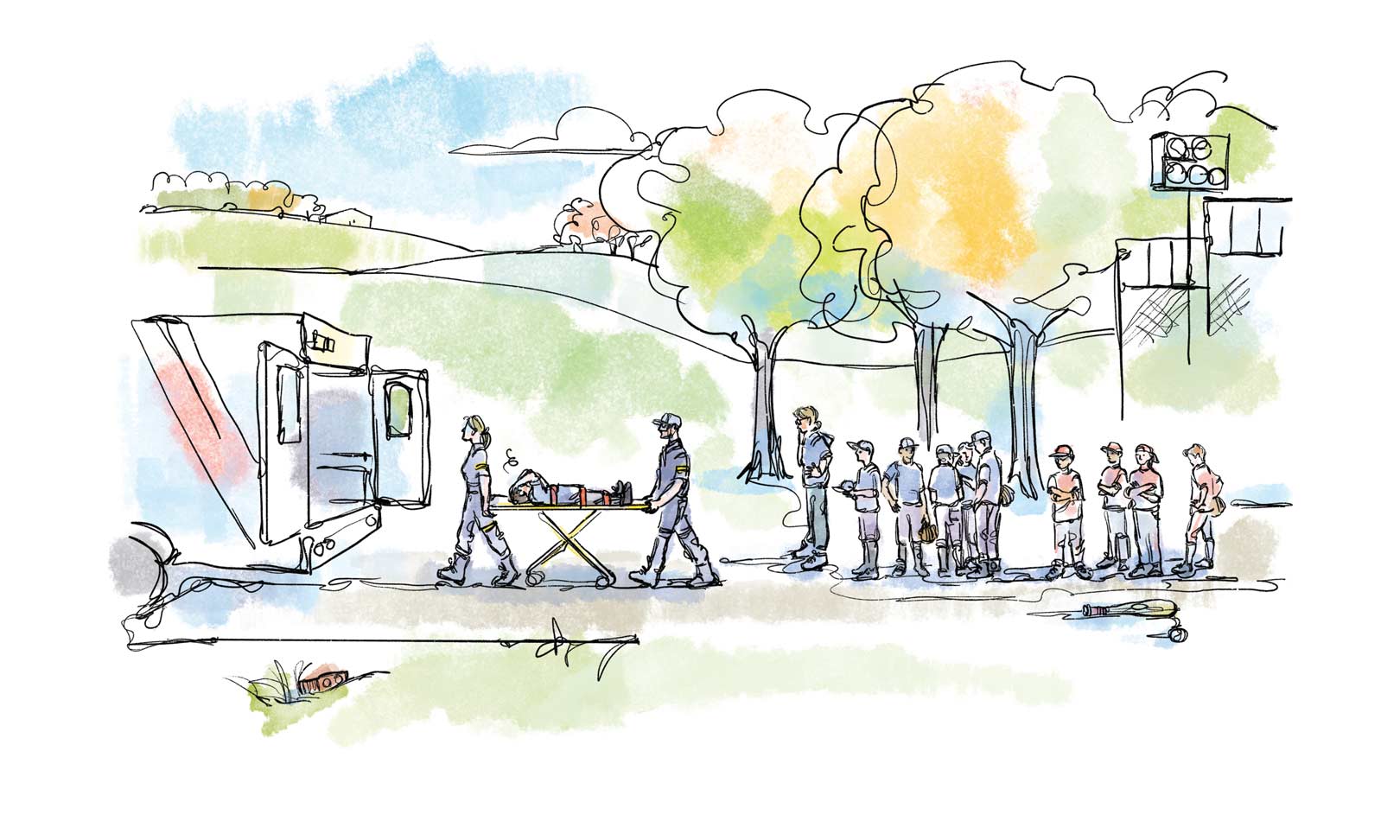
It has become commonly accepted that we live in difficult times. Kids can’t afford a house, taxes eat up disposable income, and the homeless camps on the edge of town grow steadily bigger. The price of everything has doubled or tripled, and gangs are showing up in small towns.
But whether life is any harder than it was 50 years ago is debatable. My wife and I grew up within five miles of each other in two rural townships divided by the main highway. I didn’t bump into her until I was 36 years old, because we both thought the other lived in a very rough neighbourhood.
For my part, I spent five days in SickKids Hospital in Toronto after a baseball game our little two-room school hosted for the team from north of the highway, in the community where my wife lived. I hit a line drive between first and second that went out through the fence and down into the ditch alongside the road. I was making good time around the bases when suddenly the lights went out.
Somebody from the opposing team had thrown a piece of a brick at me to slow me down and it sure did the trick. I staggered a few steps off into left field, did a faceplant in the grass and got tagged. Mrs. Raeburn, the umpire, had thick Coke-bottlebottom glasses and couldn’t see the pitcher let alone a little guy lying in the outfield. She declared me “out” and a couple of kids dragged me to the sidelines. I ended up with a concussion, and when I got back from the hospital I made a mental note never to venture north of the highway again.
For my wife’s part, she was brought up on a steady diet of shocking news flashes that admittedly came far too often from south of the highway. These included farm and road accidents, fires, suicides, a couple of robberies, fatalities from falling trees, a cattle embezzlement scheme and the explosion of a church. (The last was carried out in daylight by the church wardens, but no permit had been issued.) It didn’t help that her mother was a superstitious person who believed that every day came with its fixed quota of calamity, and if it landed somewhere else it meant her own family and neighbours had been spared for the moment. To her way of thinking, south of the highway was a good place for bad things to happen.
Neither side of the highway was any kind of paradise. The topsoil was thin, fences were flimsy and none of the tractors had brakes. People paid for their gas with crumpled one- and two-dollar bills. The drugs of choice were alcohol for the men and Valium for the women.
Despite the poverty and the drudgery of that life, my neighbours worked together and played together and showed a marvellous talent for making their own fun. And they had a remarkable way of pulling together in a crisis, like a death or a fire. As I got older, I realized this is how people in most small communities behaved right across the country and still do today.
Those little farmhouses are almost all gone now, the properties taken over by weekenders and retired professionals. But the instinct to look after each other is still there.
I spoke at a dinner not long ago in the little town of Woodville, where 20 members of the Lions Club were celebrating its 50th anniversary. Just about every public service in the town apart from the roads and stoplights had been made possible by those 20 men. During the dinner, the president presented one of the members, a retired cattleman, with a lifetime achievement pin. The man looked at the pin and told the crowd, “I didn’t join this club to win awards. I don’t work any harder than anyone else here. Thanks, but you can just put this up on the wall.” He handed the pin back to the president and sat down to enthusiastic applause.
The big change for those volunteers is they can’t find any young people to replace them. I think that’s because times are actually not yet quite as hard as they were a century ago when many of these organizations were founded.
If that time comes, we do have their example and will know what to do.
Story by:
Dan Needles
Photography by:
Shelagh Armstrong




